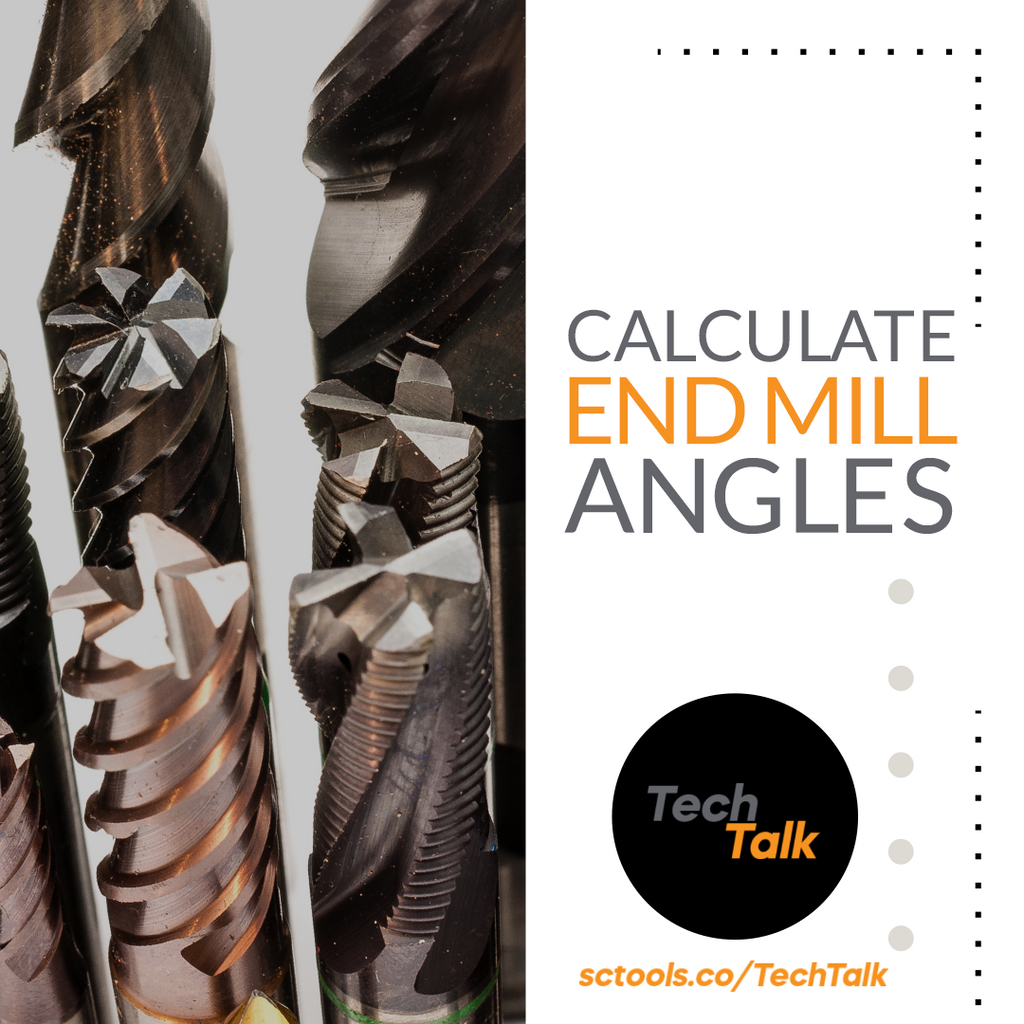When choosing a tool for a machining process, machinists routinely consider the material, tooling dimensions, and flute count. Considering the helix angle is essential since it influences chip evacuation efficiency, component polish, tool life, and cycle times.
End mills typically have straight or helical edges. Segments of 30°, 45°, and 50° make up the helix angle. Helix edge end milling cutters have been extensively used in milling because they offer light cutting and smooth cutting and are highly efficient.
Cutting tools for finishing work will have straight flutes, whereas those designed for roughing will have chip-breaking grooves. However, an increased helix angle provides low loads per cutting edge and higher stability. High helix angles achieve low cutting-edge loads and better precision and finish on deep cuts.
Using a lower helix when not necessary can result in chattering and subpar finishes and shorten the tool's life. Consequently, when using a cutting tool, a machinist must consider the tool's end mill angle and how it may affect the effectiveness of its application and the finish obtained.
What Factors Determine End Mill Angle?
Using a big helix angle end mill is beneficial to prolong the tool's life when working with stainless steel materials because they have low thermal conductivity and a significant impact on the cutting edge's ability to transmit heat.
The helix angle alters the features of a finished machined surface. Big helix angle end mills are sometimes utilized when smooth finishing is desired. The cutting resistance will increase, and the force of a good helix angle cutter will increase when using an end mill with a large helix angle. Appropriate measures must be taken, like using a tool holder with high clamping rigidity, must be taken.
It is sometimes necessary to use an end mill with a short helix angle when the rigidity of the workpiece is low, such as when processing thin plates, even if the tool has high rigidity. To put it another way, as the helix angle of the end mill increases, so does the contact length between the workpiece and the cutting edge.
This will decrease the load on the cutting edge per unit length and increase tool life. However, the cutting resistance will also rise, necessitating a tool holder with strong clamping rigidity.
Understanding the Tool Application Needs
What you're aiming to achieve will determine the best tool to utilize. A higher 45° helix is well-suited for finishing applications where the tool runs considerably quicker but removes little material. In contrast, a slower 35° helix is suitable for roughing applications due to its increased strength and capability to carry a bigger chip load.
In roughing and finishing applications, the medium 40° helix offers a good balance between the advantages of slow and high helixes. There are hundreds of high-performance end mills for aluminum that carry helical carriers in the 35°, 40°, and 45° helix configurations.
Importance of Using End Mill Angles
An end mill's cutting force consists of an axial and radial component. While the axial component presses the end mill against the holder, the radial component tends to bend the end mill and causes vibrations.
The fraction of axial force increases with an increasing helical angle; all the force is radial on a zero-degree end mill (straight end mill). With each edge making contact with the substance of the workpiece, there is a quick shock load. This results in vibrations, poor surface quality on the part, and short tool life.
Higher angles result in smoother cutting, reduced vibrations, better chip evacuation, and better surface finish. The cutter, however, is less robust and cannot handle high feed rates or depths of cut. Use a lower helix angle cutter for heavy cutting where the finish and tolerance are critical.
Bottom Line
One of the key characteristics of the helix edge end mill is the helix angle. The cutter's ability to cut significantly impacts the change in helix angle. Due to CNC machining and flexible manufacturing technology developments, it has become much more straightforward for machinists to change the size of the helix angle throughout the tool manufacturing process.
At SCTools, we continue exploring and developing CNC cutting tools to provide our clients with quality industrial tools. Contact us if you need to know how to calculate end mill angles.
 |
If you have any questions about carbide cutting tools, end mills, drills, etc. be sure to reach out to us @ sctools.co/Home or call us at (877)737-0987. We help you machine better! |



Comments (0)